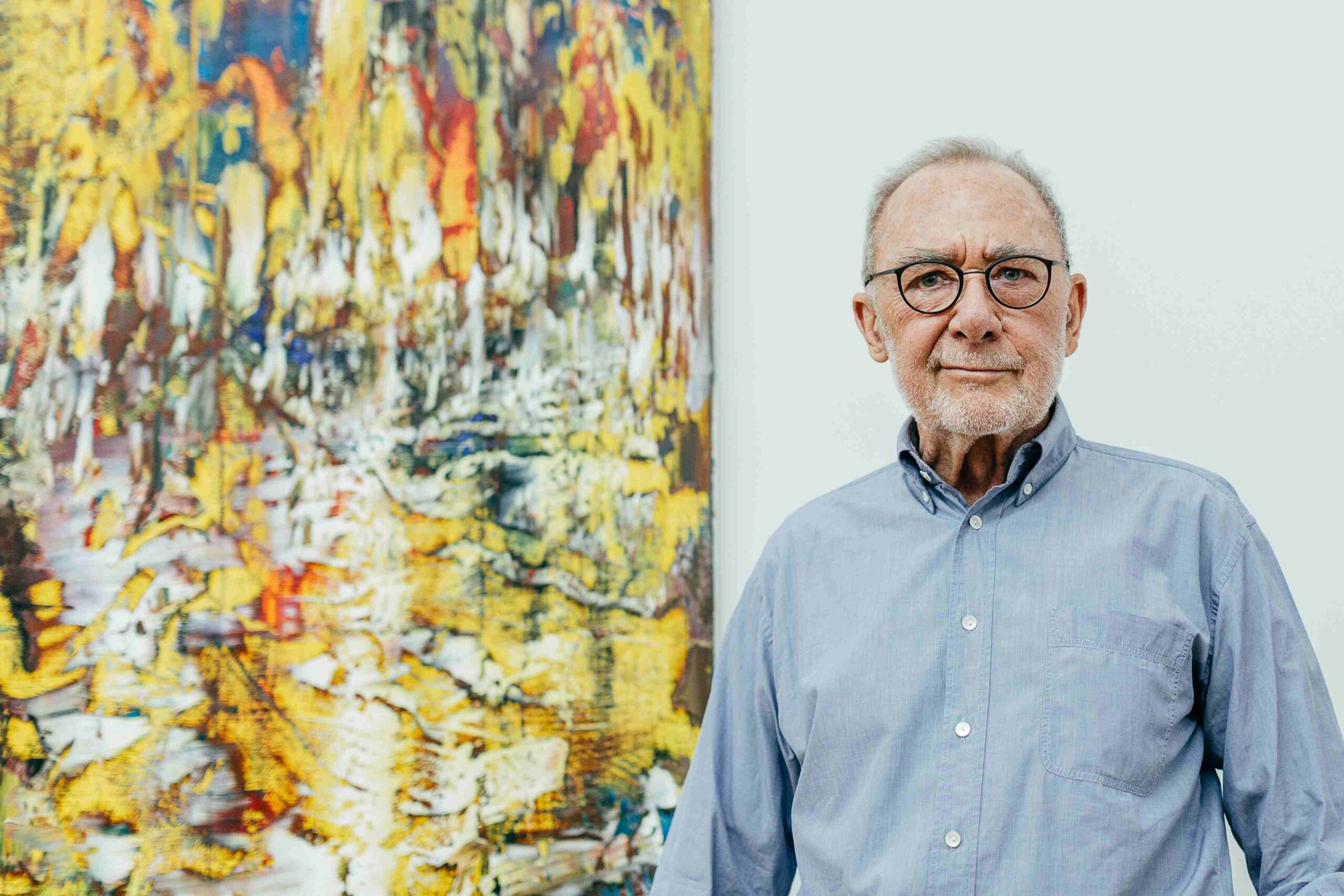
A visit to Gerhard Richter. 100 Works for Berlin, on view at the city’s Neue Nationalgalerie, is an ideal way to take in two lions of German art and architecture at once. Housed in one of Berlin’s most architecturally significant exhibition spaces, the show spans fifty years of the career of one of Germany’s most famous living artists. Depending on your last visit to the city, this also may be your first opportunity to step inside the Neue Nationalgalerie after a years-long gut renovation which preserved Mies van der Rohe’s original 1968 structure while making the space, particularly the downstairs galleries, where you’ll find 100 Works for Berlin, a vastly improved place to look at art.
Visitors might be perplexed however, by the exhibition’s billing as a “long term permanent loan,” on view through an unspecified date in 2026. Although this pairing may seem synergistic, the Neue Nationalgalerie was never the final destination for 100 Works for Berlin, which, in a move to prevent their ever being sold, the Gerhard Richter Foundation originally designated for a new exhibition space next door. But as the New York Times reports, that project is currently nothing more than an expensive hole in the ground.
In the grand tradition of German public works that run years late and comically over budget (see: Hamburg’s Elbe Symphony, which took a decade to complete and cost €670 million more than projected, and the Berlin-Brandenburg Airport, which opened eight years behind schedule and blew its original cost by €4 billion), visitors may be able to enjoy Richter’s show in its current space for some time, which in this case would be a lucky twist to another major German public project gone haywire.
Richter, who was born in 1932, is known for his experimentation turning the figurative abstract. Most significantly, Richter grapples with his career-long question whether, after the Holocaust, if art can still be created. A digital piece, Strip — massive, showy, almost vibrating in wait of being photographed — opens 100 Works for Berlin.
The artist’s Birkenau paintings are the show’s physical and moral center. Based on four August 1944 photographs taken in secret by Jewish prisoners of Auschwitz-Birkenau, Richter created large-format canvases of the images, then layered them with paint until they became melancholy gray and red abstractions. The paintings are shown together with small reprints of the photographs, and are displayed across from a signature of Richter shows: large, plain mirror sculptures. These four paintings are gray and enormous. Whether you are ready for it or not, a dim but present version of your reflection will be integrated in the Birkenau collection.
The same goes elsewhere, where Richter’s mirror sculptures hang near two other paintings based on photographs, Aunt Marianne, (who starved to death in a mental asylum under National Socialism) and Uncle Rudi (depicted in his Nazi uniform). The closest reflective sculpture in this room, made from enameled glass, Black, Red, Gold, is painted in the colors of the German flag.
The collection offers plenty of easier hits, too. Near the paintings of Richter’s killed and killer relatives you’ll find Skull, the artist’s famous, cozily moody, not-quite-photorealist portrait of a skull against a gray background. Nearby, an excerpt from 4900 Colours, three enormous lacquered square panels, is an eye-popping rendition of just what it sounds like. Further on, abstract paintings similar in size and style to Birkenau, but without their loaded content (some are simply titled Abstract Painting) hang next to mirror sculptures, where you can catch a glimpse of yourself as just another gallery-goer.
The show’s most intimate feeling works are contained in a trove of personal photos daubed and stricken with oil. The Overpainted Photos series, using images Richter pulled from his own private collection, shows family members, museum visits, walks and travels. Or rather, the series, which the artist has added to since 1996, shows part of each of these things.
A little girl playing at the edge of water is half-covered by a gray wave, low-hanging green clouds hover over a lonesome tree on clear cut land, a mother and her child disappear behind a spray of paint that appears like a splash of water over their blurry embrace. Unlike Birkenau, there is no horror here to shroud in full, and unlike Aunt Marianne and Uncle Rudi, the subjects are not so weighty as to warrant being re-represented as paintings. Stretched the length of a wall, the series is an invitation to stroll and wonder why Richter might have painted over one part of an image and not another, an easygoing balance to what comes next.
Written July 2023


Leave a Reply